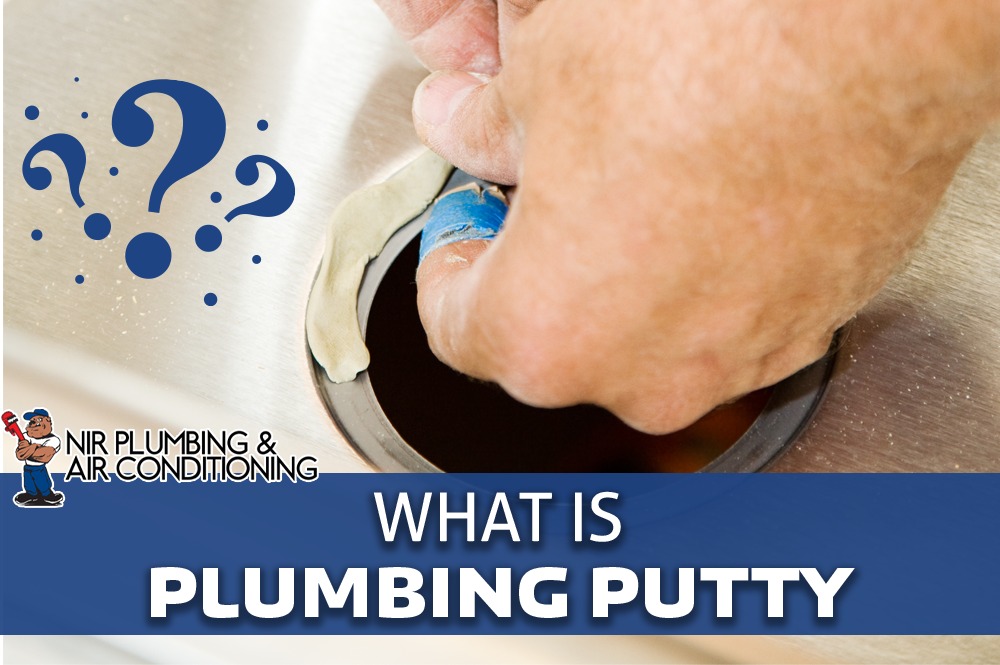[vc_row][vc_column width=”1/1″][vc_column_text]Overview:Leaking pipes are bad when you have no idea how to fix it, but plumbing putty is a great solution [/vc_column_text][vc_column_text]Are you a DIY enthusiast who likes to solve plumbing problems on your own? If you need to prevent leaks around your faucets, sink, or drains – plumbing putty, aka plumber’s putty, is the product your bag should contain. But what is the plumbing putty? Let us enlighten you!
If you enjoy clay/slime, plumbing putty is almost the same. It’s a pliable sealing staple – for professionals and DIYers alike—a clay-like compound that the plumbers use to create watertight seals around water drains and faucets.
Widely known as one of the essential plumber’s tools, plumbing putty is an excellent choice for setting sink strainers, showers, and faucets. One thing to consider is that plumber putty shouldn’t be mixed with Teflon tape. Where Teflon tape is applied reliably on joint pipes for liquids and gasses under pressure, plumbing putty works as a flexible caulk to prevent leaking faucets.
Unlike other compounds, plumbing putty remains soft and doesn’t lose consistency. Besides, you can modify it after the first application. Since a plumbing putty is an oil-based product, it may leave stains on porous materials such as quartz, sandstone, and granite. For a flawless application, try opting for a stain-free plumbing putty as this variation comes oil-free and doesn’t stain the porous material.
[/vc_column_text][vc_column_text]
HOW TO USE A PLUMBING PUTTY:
Plumber’s or plumbing putty is an inexpensive material that comes in small plastic tubs. Plumbers make a shape by hand before applying it to the affected part. To apply plumbing putty flawlessly, follow these steps:
1. Making a Putty Rope: Scoop out a ball of putty from the tub (gloves optional) and roll it back and forth between the palms to form a long rope.
2. Placing the Putty Rope: Place the putty rope into the place you want to seal – carefully starting from the initial point into a continuous loop, dropping down to the end, and bouncing back to the starting point. If you think that the rope is too short, start over, and build a long string after slicing it into sections that can leak.
3. Press Without Breaking: To place the putty rope into the right place, gently press onto the defected area without deforming it. This is to sustain the firmness, so it doesn’t turn upside down, or it’ll squish down when you instill it. Make sure that you have already dried the place with a rag or towel, and press the putty snake gently until it’s secured to the surface.
4. Install Part: Once you’re done placing the plumbing putty, install the part – first softly and then tighten it down. When you tighten the piece to its required place, the plumbing putty will squeeze out off the edges – it’s of no concern and very desirable since it tells that you’ve already used plenty of it. Tighten down that part all the way, so the excess putty pokes out, and if it comes out clean, put it back into the tub for the future.
[/vc_column_text][vc_column_text]
WHEN TO NOT USE PLUMBING PUTTY:
Although plumbing putty is an awesome go-to solution for hundreds of plumbing problems, make sure not to use it in places where adhesive strength is required.
Is it suitable for Underwater Sealing Projects?
Since plumbing putty is popular for watertight sealing faucets, drains, and sinks – can it be used underwater?
Although it’s designed to provide a watertight seal against the seeping water, it’s not a good option to opt for underwater use. The elements/ingredients it’s made up of don’t support underwater projects.
What about to Fix Broken Pipes?
While plumbing putty is like the band-aid to many plumbing ails, fixing a broken pipe requires quick-drying adhesive. In this case, plumbing putty will not help stop the leaking water, but Teflon tape might help.
Can it be Used to Seal Pressure Pipes?
To put it simply, plumbing putty is suitable for reversible seals – the places such as faucets and drains. This means it isn’t suitable when it comes to pressure pipes. The latter will need something substantial to dry quickly, and soft textures will not last long.
Is Plastic OK?
One of the reasons plumbing putty is so popular is because of its ability to work with versatile materials to prevent leakage — as it easily sticks to most. However, plastic materials should be avoided. The reason is the chemicals used in plumbing putty.
It’s made of clay-like chemicals with petroleum ingredients, and when it comes into contact with plastic, it degrades the plastic quality.
[/vc_column_text][/vc_column][/vc_row]


